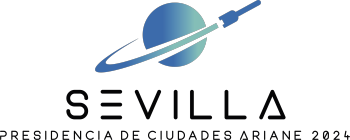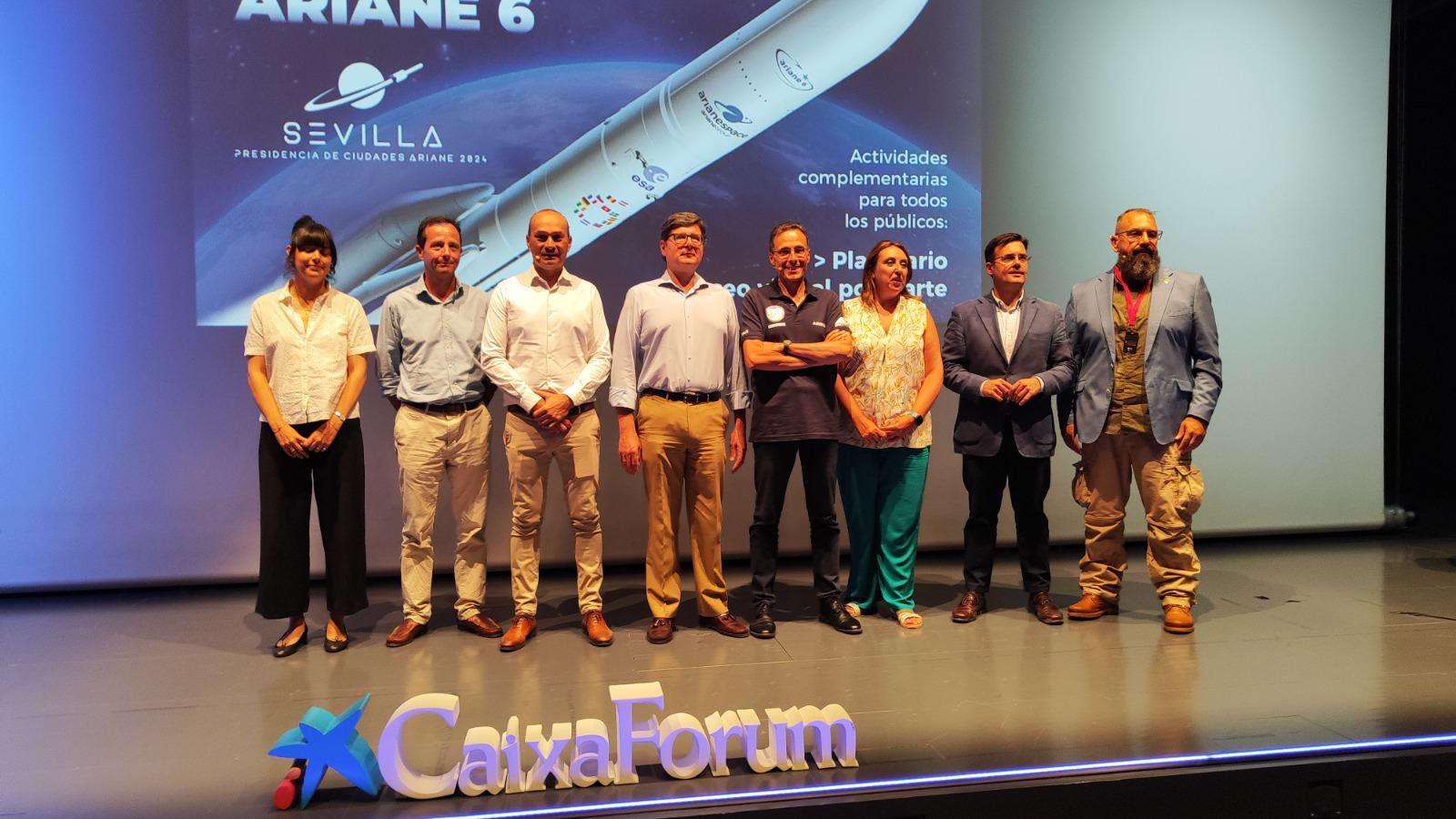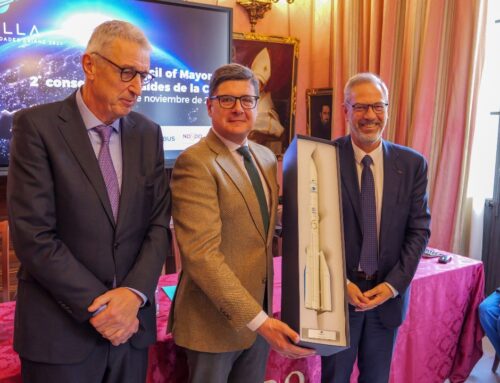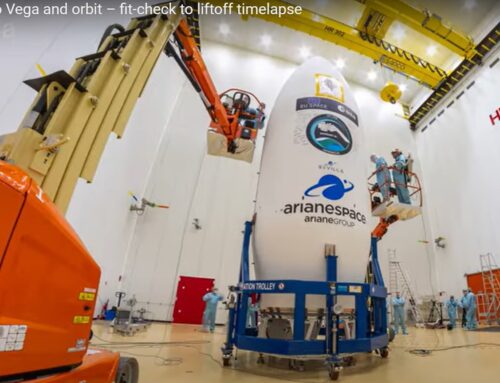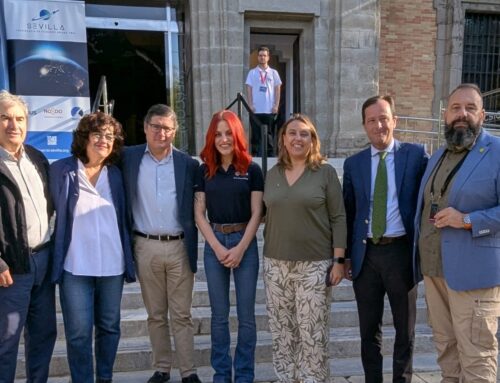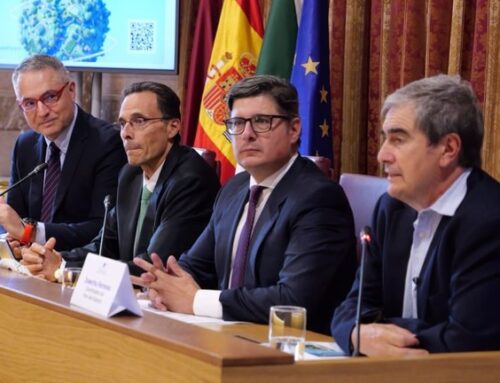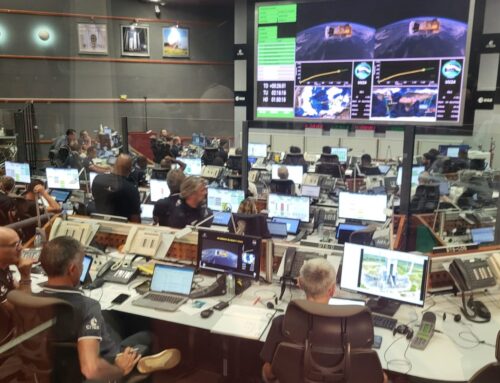CaixaForum is hosting the deferred broadcast of the launch of the inaugural flight of Ariane 6, which took place on 9 July from the European Spaceport in French Guiana. This was ‘a historic moment, the beginning of a new era for European space travel, which has taken place under Seville’s European Presidency of the Ariane Cities (CVA), said the delegate for Cartuja, Innovative Parks, Economy, Employment and Trade, Álvaro Pimentel. The opening ceremony of the Ariane 6 launch celebration was attended by Miguel Angel Yagüe, Director of Programme Operations at Airbus Space, and the director of CaixaForum Seville, Moisés Roiz.
Ariane 6 is Europe’s new heavy-lift launch vehicle, has a resettable upper stage that allows it to launch multiple missions into different orbits in a single flight, and comes to replace its highly successful predecessor, Ariane 5. It will have a flight autonomy of 2 hours, 51 minutes and 40 seconds.
The Seville City Council’s Economy Delegate pointed out that ‘the space sector forms part of the Andalusian aerospace industry, and represents one of the great vectors of economic growth in our city for the coming years. This will undoubtedly be reinforced by the activity of the Spanish Space Agency’s headquarters in Seville and the opening of the Spanish Space Agency’s incubator, which will allow us to position ourselves at the epicentre of the space industry in Spain’. ‘The Seville City Council will continue to work intensely and constantly to strengthen and support this sector, which can bring so many and varied benefits to our city,’ he added.
Miguel Angel Yagüe, Director of Programme Operations at Airbus Space, said: ‘From Airbus, we would like to congratulate ArianeGroup, Arianespace and ESA, who after 10 years of work, have given us a brand new launcher and renewed European sovereign access to space. The road has not been easy, the challenges have been many, but it has been worth it. The first steps of historic journeys are always difficult and this one was no less so, culminating in a successful maiden flight of Ariane-6. However, the important thing is to keep working towards success, serving the Society. During these ten years, thousands of people in Europe have worked for this project, where Spain has played a major role in different parts of the launcher. The Ariane-6 symbolises for Europe prosperity, innovation, high qualification of jobs and social benefit. Airbus would also like to thank the Spanish Space Agency for its support to this emblematic European project. We look forward to seeing what the future holds for European space together with Ariane 6.
Por su parte, el director de la Agencia Espacial Española (AEE) en Sevilla, Juan Carlos Cortés Pulido, afirmó que «éste será recordado como un día histórico, ya que con el éxito del Ariane 6, Europa vuelve a tener capacidad estratégica para acceder a las órbitas espaciales».
Por su parte, el director de CaixaForum Sevilla, Moisés Roiz, afirmó que ‘la misión de Caixaforum es acercar a todos la cultura y el conocimiento, claves para el desarrollo de la sociedad’. Colaborar en estas actividades es, sin duda, una gran satisfacción, ya que permite que la ciencia llegue a un público amplio y contribuye a enriquecer la vida de muchas personas’, afirmó.
Outreach activities in the space sector
The people of Seville were also able to enjoy other activities to raise awareness of the space sector organised at CaixaForum, with the collaboration of the AstroEmociones Association: Planetarium and Virtual Reality (to walk on the Moon or fly over the Planet Mars). ‘Walking on Mars with virtual reality’ has offered the opportunity to move virtually to the surface of the red planet, and to enjoy a simulation of its dawn, while feeling the vertigo of take-off. The activity recreates the journey of the Mariner 9 probe in 1971 when it reached Mars and became the first probe to orbit another planet. Among its main discoveries was the distinctive canyon system on the Martian surface, Valles Marineris, named in its honour. The other activity consisted of a journey through the Solar System in the Planetarium, ‘Solar System Fulldone’, where a tour of the main planets, satellites, asteroids and other elements of the planetary system was developed to learn about some of its most important characteristics.
